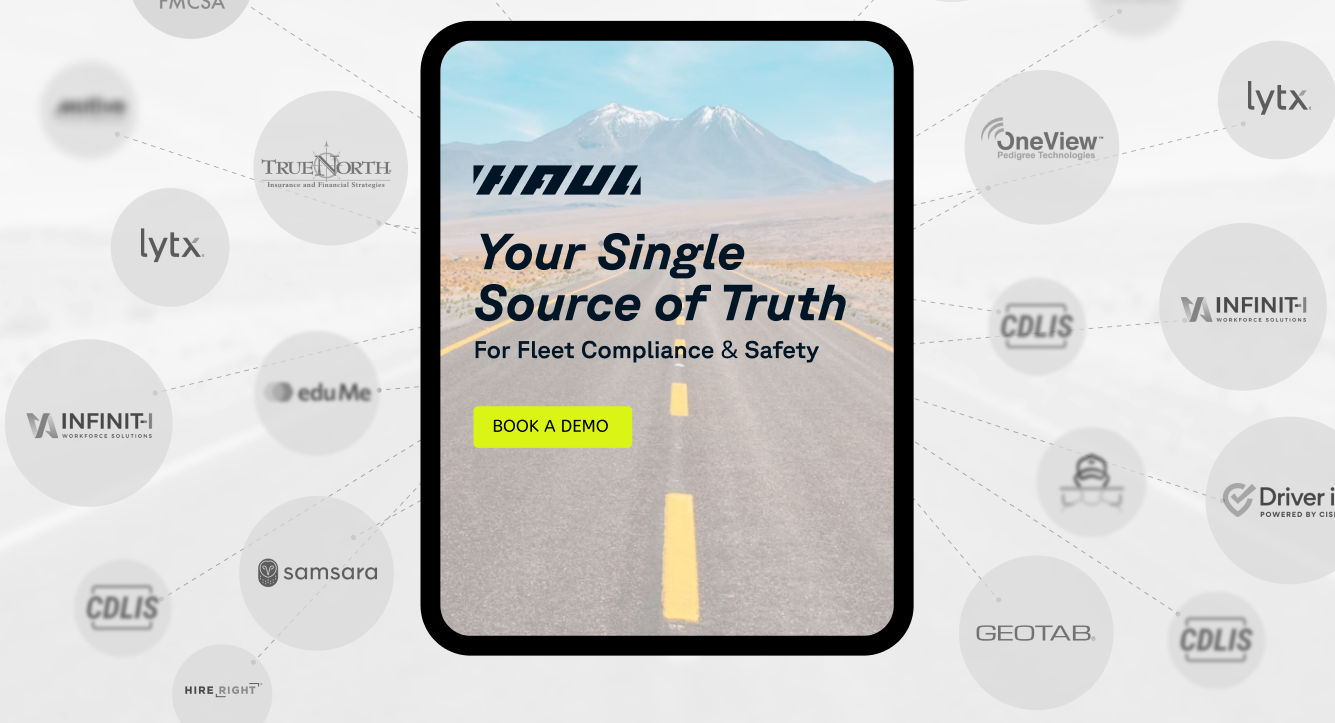Understanding ELD Requirements for Box Trucks

In the world of trucking, compliance is key. One crucial aspect of this is understanding ELD requirements for box trucks.
Electronic Logging Devices, or ELDs, have revolutionized the way trucking operations are managed. They ensure compliance with Hours of Service regulations, enhancing safety and efficiency.
But what does this mean for box trucks? How does the ELD mandate apply to them, and what are the specific requirements?
This article aims to answer these questions. It provides a comprehensive guide to ELD requirements for box trucks, from technical specifications to compliance checklists.
Whether you're a box truck driver, a fleet manager, or a logistics company, this guide will help you navigate the complexities of ELD compliance. Let's dive in.
What is an Electronic Logging Device (ELD)?
An Electronic Logging Device, or ELD, is a digital tool that records a truck's driving time. It's designed to ensure compliance with Hours of Service (HOS) regulations set by the Federal Motor Carrier Safety Administration (FMCSA).
ELDs automatically record data such as engine power status, vehicle motion, miles driven, and engine hours. This replaces the traditional method of manual logbook entries, providing a more accurate and efficient way to track a driver's on-duty time. This not only helps in maintaining compliance but also enhances safety and operational efficiency.
The ELD Mandate and Box Trucks
The ELD mandate is a federal regulation that requires commercial drivers to use ELDs. This mandate applies to most motor carriers and drivers who are currently required to maintain Records of Duty Status (RODS). This includes box trucks, which are often used for cargo delivery and final mile services.
The mandate was implemented to improve road safety by ensuring drivers adhere to their Hours of Service (HOS) limits. It also aims to prevent driver fatigue, which is a significant factor in many truck-related accidents.
The ELD mandate for box trucks includes several key requirements:
- The ELD must be registered with the FMCSA.
- The device must be able to automatically record data.
- The ELD must be synchronized with the engine of the vehicle.
- Drivers must be trained on how to use the ELD.
- The ELD data must be easily accessible during roadside inspections.

Importance of ELDs for Hours of Service Compliance
ELDs play a crucial role in ensuring Hours of Service (HOS) compliance. They automatically record driving time, providing an accurate and tamper-proof log of a driver's on-duty hours. This helps to prevent violations of HOS regulations, which are designed to prevent driver fatigue and improve road safety.
Moreover, ELDs simplify the process of record-keeping for drivers and fleet managers. They eliminate the need for manual logbooks, reducing the risk of errors and discrepancies. This makes it easier for drivers to focus on their primary task - safe and efficient driving.
Benefits of ELDs for Box Truck Operators
ELDs offer numerous benefits to box truck operators beyond mere compliance with regulations. They can significantly enhance operational efficiency and productivity, leading to cost savings and improved profitability.
Some of the key benefits include:
- Improved accuracy in record-keeping, reducing the risk of fines and penalties.
- Enhanced driver safety through monitoring of driving behaviors and HOS compliance.
- Streamlined administrative tasks, freeing up time for core business activities.
- Real-time tracking and monitoring of vehicles, aiding in efficient fleet management.
- Valuable data for business analytics, helping to make informed decisions and strategies.
Choosing the Right ELD for Your Box Truck
Selecting the right ELD for your box truck is crucial to ensure compliance and reap the full benefits of this technology. It's not just about buying the first device you come across.
Consider factors such as the device's compatibility with your vehicle, ease of use, cost, and the quality of customer support provided by the vendor. Also, check if the ELD is registered with the FMCSA to ensure it meets all technical specifications. Remember, a well-chosen ELD can be a valuable tool for enhancing your box truck operations.
ELD Technical Specifications and Installation
An ELD must meet certain technical specifications to be compliant with FMCSA regulations. It should be capable of recording data such as date, time, location information, engine hours, vehicle miles, and driver identification. The device should also be able to transfer data during roadside inspections in a standardized format.
Installation of an ELD in a box truck is typically straightforward. It involves connecting the device to the vehicle's engine to record its operation data. However, it's recommended to have the installation done by a professional to ensure it's correctly set up and functioning as intended.
Exemptions and Special Considerations for Box Trucks
While the ELD mandate applies to most commercial vehicles, there are some exemptions. These exemptions are based on factors such as the type of vehicle, its use, and the driver's status. For instance, drivers who operate within a 100-air-mile radius of their normal work reporting location and meet other conditions are exempted.
Here are some exemptions applicable to box trucks:
- Trucks that are older than model year 2000.
- Drivers who don't maintain Record of Duty Status (RODS) for more than 8 days in a 30-day period.
- Driveaway-towaway drivers where the vehicle driven is the commodity being delivered.
The Impact of ELDs on Final Mile Deliveries
ELDs have a significant impact on final mile deliveries, the last leg of the delivery process. They help in improving efficiency and ensuring timely deliveries. With real-time tracking, ELDs provide accurate Estimated Time of Arrival (ETA) which is crucial for customer satisfaction in final mile deliveries.
Moreover, ELDs help in route optimization, reducing unnecessary mileage and fuel consumption. This is particularly beneficial for box trucks involved in final mile deliveries, where multiple stops in close proximity are common. Thus, ELDs contribute to making final mile deliveries more efficient and cost-effective.
Compliance Checklist for Box Truck Operators
Compliance with ELD requirements is crucial for box truck operators to avoid penalties and ensure smooth operations. Here is a simple checklist to help you ensure you're on the right track:
- Ensure your ELD is registered with the FMCSA.
- Train your drivers on how to use the ELD correctly.
- Regularly check the ELD for any malfunctions and fix them promptly.
- Keep a supply of blank driver's records of duty status (RODS) for at least 8 days.
- Ensure the ELD is properly mounted and visible to the driver.
Remember, compliance is not a one-time task but requires ongoing diligence. Regularly review your operations and ELD usage to ensure you remain compliant with the regulations.

Conclusion: Embracing ELDs for a Safer and More Efficient Future
The ELD mandate, while initially seen as a burden by some, has proven to be a game-changer in the trucking industry. It has not only improved compliance with Hours of Service regulations but also enhanced safety and efficiency in operations.
For box truck operators, understanding and complying with ELD requirements is not just about avoiding penalties. It's about embracing a technology that can streamline operations, improve driver safety, and ultimately, contribute to a more efficient and sustainable future for the trucking industry.

